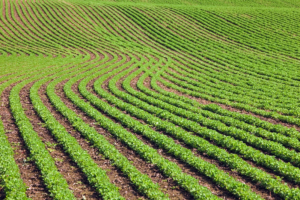World Hunger Relief: Farms Fight Food Scarcity
International Partnerships
World Hunger Relief trains interns from across the world how to produce and maintain a sustainable farm. The hands-on approach is especially beneficial for those that come from countries where subsistence farming is a popular occupation, such as Liberia. Job Carpenter is one intern from Liberia that visited the Waco, Texas farm in 2013 and used what he learned about sustainable agriculture systems for his current occupation.
Carpenter is the agricultural director at Ricks Institute, which is one of World Hunger Relief’s international partners. At Ricks Institute, Carpenter helped strengthen food security for the local school in Liberia and the surrounding community. Student health also increased through the efforts of Ricks Institute. Liberia, for reference, has a poverty rate of about 50 percent. More than 60 percent of Liberians are farmers, so the nonprofit’s outreach in Liberia potentially helps many locals who are malnourished and in poverty.
Local Work Goes Global
In addition to international endeavors, World Hunger Relief works locally in Waco. The 40-acre farm near Lacy Lakeview uses organic insecticides and fertilizers. Cover crops are another method to control pests, erosion and weeds. To complete the cycle, the farm uses compost from farm animals not only as fertilizer but also as a way to reduce diseases and pollution, improve the soil structure and increase soil nutrients. It was at the farm in Waco, Texas that Nicodemus Emus learned sustainable farming. Emus interned at the farm and brought his knowledge of sustainable agriculture back to Nairobi, Kenya. There, he began his own sustainable farm. So far, there have been more than 360 interns covering 20 countries at the World Hunger Relief farm.
The farm includes crops such as pumpkins, okra, beans, squash and cucumbers. It also teaches animal husbandry, particularly techniques in raising animals with little resources available. Goats, rabbits and hogs are among the animals on the farm. On working and living on the farm in a team of interns and various full-time members, Garden Manager Gala Gerber said, “We can see that we can make a difference together.”
The Ultimate Goal
World Hunger Relief continues to achieve its goals of alleviating food insecurity and malnutrition through its efforts on its farm and through international partnerships. One reason why world hunger has declined from 32.6 percent in 2000 to 22.2 percent in 2018 is the combined efforts of nonprofits, governments and other organizations. World hunger is declining, though people can do more. The United Nations proposed ending world hunger by 2030. More organizations are working together in order to accomplish this goal.
– Lucas Schmidt
Photo: Flickr

